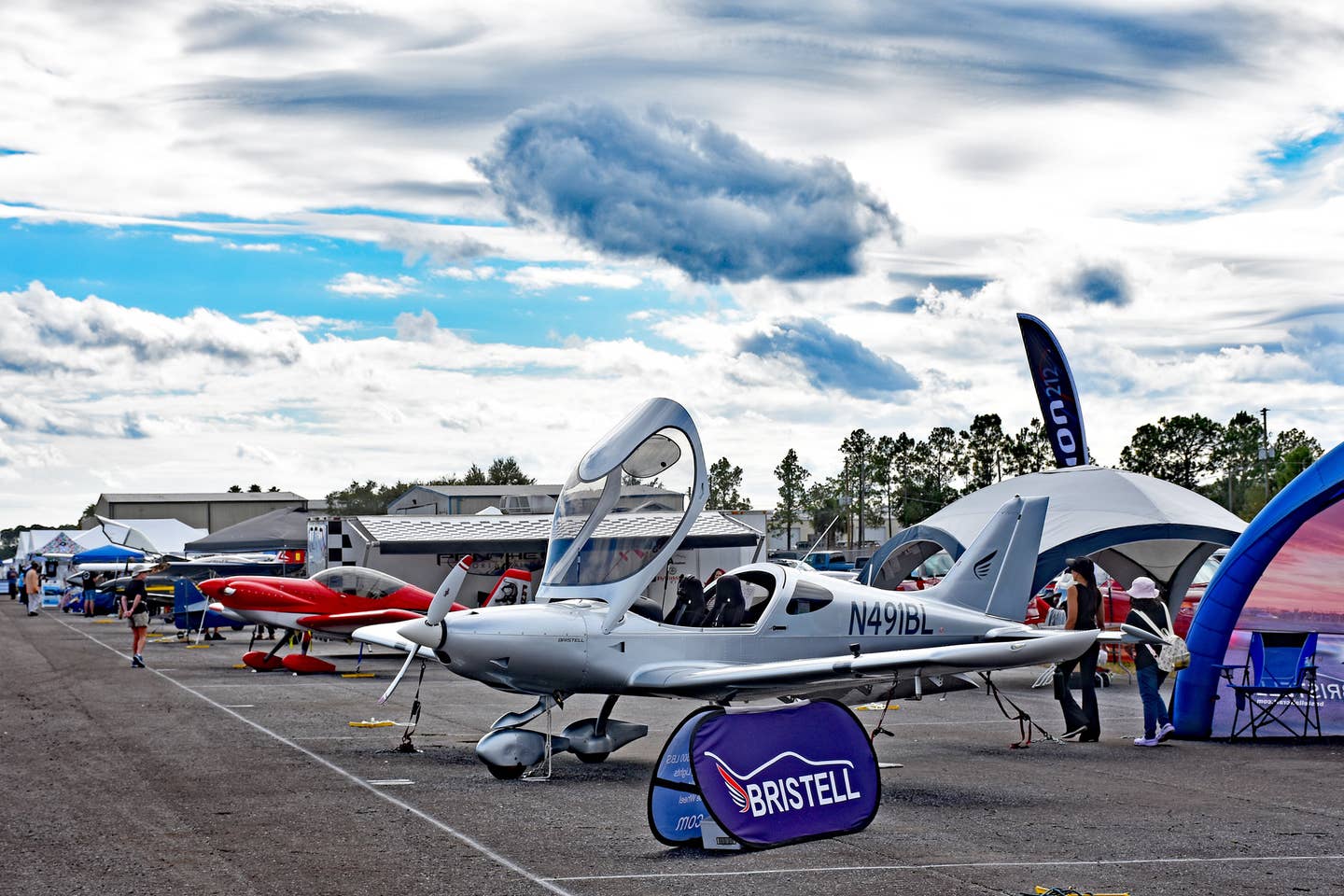
There were plenty of light sport makes and models to see on the DeLand Sport Aviation Showcase flight line. Credit: Roy Beisswenger
In every segment of aviation, there are people who are considered to be experts, the kind of leaders that have the pulse of the entire segment and have acquired their considerable knowledge base from many years of being on top of industry and market developments every day.
For the light sport category of aircraft and everything that falls under the umbrella of “recreational flying,” that expert is Dan Johnson, a 5,500-hour commercial pilot with instrument and multiengine ratings—and former flight instructor—who has flown and evaluated more than 400 LSA and other recreational aircraft sport pilots may fly.
FLYING caught up with Johnson just after he spent time at the 2021 DeLand Sport Aviation Showcase in Florida earlier this month. He was only able to make one day of the DeLand show this year, but he had a very good excuse. He was in Oshkosh, Wisconsin, being inducted into the Experimental Aircraft Aassociation’s Ultralights Hall of Fame.
After a quick commercial flight, Johnson made his way to DeLand, where he was the keynote speaker Saturday, giving a detailed presentation on what he knows about the FAA’s upcoming Modernization of Special Airworthiness Certificates (MOSAIC) rules rewrite.
“The DeLand Sport Aviation Showcase is not an airshow, it is more of a trade show,” Johnson said. “While the public turnout could be low, every single person that comes in the gate is there to see these specific kinds of aircraft. And I heard from exhibitors that they wrote orders and collected significant leads.
“The beauty of this show is that because there is less foot traffic, interested buyers can talk to the exhibitors for as long as they want and get all their questions answered,” he said. “Plus, it is very easy to take a demo flight—we’re talking three or four minutes from the moment you decide to go fly until you are in the air. If you try that at [EAA] AirVenture, you’re going to use up half of a day to take a half-hour flight.
“At DeLand, it’s the quality of the crowd that is important, not the size.”
While Johnson might have only been at DeLand one day, it was enough time to walk the show and spot some interesting makes and models.
“I was intrigued by a kit airplane called the Aeropup,” Johnson said, “which fits well into what I call the affordable aviation space. You can probably get in the air for less than $50,000 for a brand new airplane. I also liked the single-place Italian gyroplane called the Sprint Lite Gyro. And I loved the progress Viking Aircraft Engines is making with their modified 195-hp Honda 1.5L turbocharged automobile engines on the Zenith 750 Super Duty. Viking had one on display, standing up on giant tires with a big nose wheel suspension system. It looks like a monster truck in airplane form.
“The Zenith 750 Super Duty with a Viking engine is a very capable sport pilot kit. And if you have a sport pilot certificate, you could fly this airplane.”
Johnson on MOSAIC
The topic of Johnson’s keynote presentation on Saturday at the show was the FAA’s “in-progress” MOSAIC rules rewrite. While Johnson is quick to point out nothing in MOSAIC has been determined yet, there are some things we do know.
“By congressional mandate, the FAA has been tasked with rewriting the rules so that drones can be incorporated into U.S. airspace, with a deadline of the very end of 2023,” Johnson explained. “It’s a big sprawling regulation. For our sector of sport aviation, the FAA term ‘light and docile’ is key. Having said that, they are probably going to increase weight, speed, capacity (seats), and we may get retractable gear and adjustable props in the form of single-lever control. We may also get to use light-sport airplanes for compensated work such as aerial surveying with the proper pilot certificate. One thing we know for sure though is that the term ‘light personal aircraft’ is gone from MOSAIC.”
However, Johnson does say what might be true now may not necessarily be true later.
“Until the notice of proposed rule making (NPRM) is released—which I’m betting will happen at AirVenture 2022—everything I present is informed speculation. Follow the conversation, yes, but expect changes.”
As to the outlook for the LSA and recreational flying markets, Johnson said LSA sales “leveled off” during the past two years because of COVID-19. “Plus, whenever the FAA proposes a new regulation, it has kind of a cooling effect on the enthusiasm in the market because people question if the FAA is going to change the rules. Should they buy now or wait, which creates uncertainty.
“We are poised for some really interesting future developments, some of which are related to the economy. I have discovered over my years in the industry that recreational aviation flows with the stock market,” he said. “If people see their stock portfolios are going up, they’ll be out buying recreational aircraft. If they see their stocks declining, they’re going to pull back. If the economy remains at least steady, I think LSA is going to do very well in the coming few years,” Johnson said.

Sign-up for newsletters & special offers!
Get the latest FLYING stories & special offers delivered directly to your inbox






